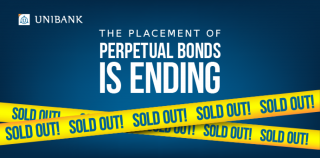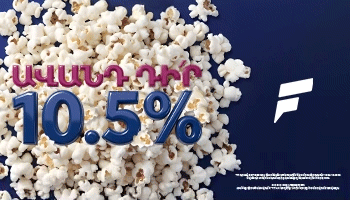
Closing and opening dual standards

Yesterday it was revealed that the European Commission had decided to annul all the restrictions for the import of Moldovan wine. This was the response of the EU to Russia, which ceased the import of Moldovan wine on September 11. This is also a response to Armenia’s claims that in the event if Armenia refused to join the Eurasian Union Russia would block the import of Armenia’s goods. Of course, the decision on the Moldovan wine was first of all political. By doing so, the EU grants its support to Moldova to defend from the Russian threats. It means that the strict standards of the European market can be downshifted when it comes to political decisions. Russia does exactly the same when it comes to political matters. The difference between Russia and EU is that Russia uses dual standards to close the import of goods and EU does the opposite and instead opens the market for new goods. This comes to prove that if Armenia refused to join the Eurasia Union and if Russia blocked the import of Armenian goods, the EU would still back us up if we had joined the Association Agreement. But Armenia blocked the opportunity of entering the 500 million EU market by accessing the Customs Union.
War for a bottle of wine or what will happen to the Armenian wine
Yesterday a noteworthy event happened in the Armenia-EU war. It was revealed that the European Commission had decided to annul all the restrictions for the import of Moldovan wine. This was the response of the EU to Russia, which ceased the import of Moldovan wine on September 11. An EU commissioner on agriculture Dacian Choloch touched upon this matter, “It means that there won’t be any restrictions for the Moldovan wine. As of the quality, there are standards, to which all the imported beverages must conform. The Moldovan wine matches those.
The decision to access the import of the Moldovan wine was made prematurely prior to the Association Agreement between the EU and Moldova. Soon this decision of the commission will be reiterated by the Committee of Ministers and the European Parliament. It will become binding during a few months. As of now the Moldovan wine will have limited access to the European market. They produce good quality wines, which gradually become more popular.” Thus, the EU had supported Moldova at the wine war and it agreed to open its strict market to the –non-quality wine of Moldova (as was claimed by the head of RosPotrebNadzor Gennadi Onishchenko).
After the embargo of the Moldovan wine many people started to claim that the loss of the Russian market will leave an irretrievable harm to the Moldovan economy because during the previous year Moldova exported 21 million liters of wine (22 times more than Armenia). Moldova was annually receiving 35-40 million dollars from the sale of its wine in Russia. But yesterday’s statement of the EU proved that the opening of the European market would bring more profit than the closing of the Russian market. EU is a large wine market. Here 165 million hectoliters of wine are annually consumed here (1 hectoliter is 100 liters), which is 62-63% of the world consumption. The annual consumption of wine in Russia is 10,4 million hectoliters.
Moreover, with the volumes of wine consumption Russia not only yields to EU but also certain EU countries. For example, in France annually 30,2 million hectoliters of wine is consumed, in Italy 22,6 million, in Germany 20 million, in UK 12,5 million. It means that the EU can easily fit the 200-210 thousand hectoliters from Moldova especially if it has political motives as well. What does all this have to do with Armenia? This indirectly speaks of the fact that the claims that Armenia’s economy would suffer had Armenia refused to join the Eurasian Union. What would happen to the Armenian wine if the latter deepened its ties with the EU and signed the Association agreement? First, let’s mention that in 2012 Armenia produced 5713,7 thousand liters of wine. Only 1184,6 thousand was exported, which was worth 4,1 million USD. It means that only 1/5 of the Armenian wine goes for export. At this moment, Armenia’s wine is mostly exported to Russia. In particular, in 2012 926,000 liters of wine was exported to Russia, worth 3 million USD. 11,7 thousand liters was exported to Belarus (55,5 thousand USD). These are ridiculously low volumes. If the European market is able to digest the Moldovan wine it definitely would be able to digest the Armenian wine, which is 20 times less than that of Moldova.
Volume of exported Armenian wine to EU
| 2012 | 2012 | ||
| Measurement unit | Volume | Cost USD | |
| Lithuania | Liter | 31900 | 121,6 |
| France | Liter | 19900 | 66,2 |
| Czech Republic | Liter | 13100 | 53,4 |
| Poland | Liter | 5500 | 22,2 |
| Germany | Liter | 6200 | 19 |
| Bulgaria | Liter | 2600 | 15,5 |
| UK | Liter | 912 | 12,7 |
| Italy | Liter | 1100 | 5,6 |
| Estonia | Liter | 234 | 2,5 |
| Belgium | Liter | 324 | 1,4 |
| Switzerland | liter | 117 | 0,7 |
| Total | 81887 | 320.8 |
Let us add that Armenia is already exporting wine to Europe. In 2012 Armenia exported wine to 11 European countries – France, Germany, Italy, UK, etc. The volume of the exported wine amounted to 82,000 liters, worth 320,000 USD. Of course, this is a very low volume but it comes to prove that the Armenian wine can be sold in Europe especially if favorable conditions are created for that. Although all this relates to the wine only but we may assume that the European market would be pretty open to other goods as well. We don’t claim that in the event of opening the market the population of EU would rush to the stores to buy Armenian wine but over the course of years it would be possible to occupy a small but worthy place in the European market. But as the current developments show Armenia is moving toward the Customs Union and Russia. In this case, our only chance is to take on the space left vacant by the Moldovans before the Chinese or others take control of it.
By Babken Tunyan























